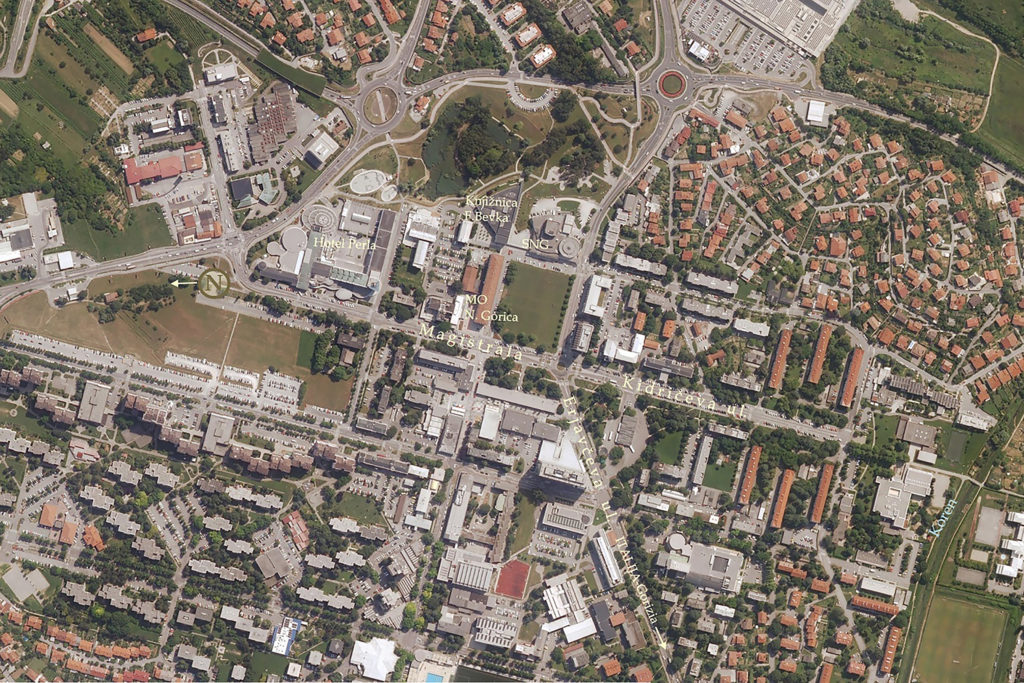Through the heritage streets of Nova Gorica
How and why to heritagise in a young city? What temporal distance is necessary to critically evaluate the beginnings and the development of a new city? These questions arose as we drove along the silhouette of Kromberg Castle and the Church of the Holy Trinity through the industrial area, past the former large factories, the pride of Nova Gorica, and arrived to Kidričeva Street. On the famous Ravnikar “magistrala”, next to the administrative buildings stands the Casino Perla, which for a long time made Nova Gorica shine the brightest across the border.
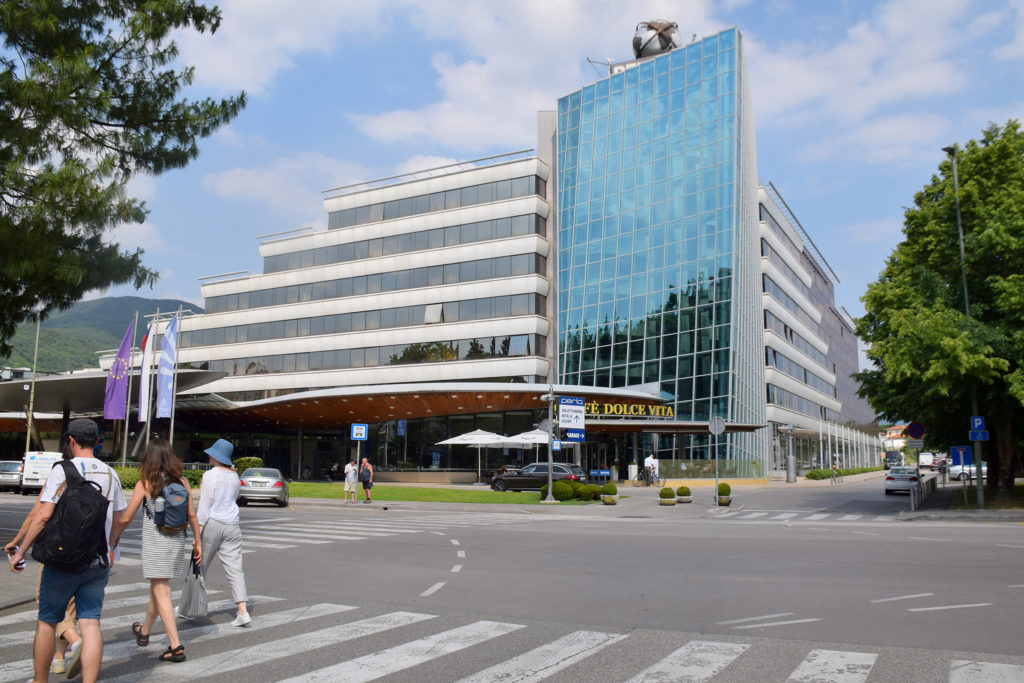
After meeting with Branko Marušič we make our way in the sweltering heat to the model of the city, where our guide Blaž Kosovel is already waiting for us. Seeking the shade of the lush greenery, we sit down next to the commemorative inscription that recalls the original idea, as later formulated by Edvard Ravnikar, “to build something big, beautiful and proud, something that would shine beyond the border”. Our guide explains in an engaging way the timing and the actors behind the decision to build a new administrative centre on this site of meadows, marshy ground and an abandoned cemetery.
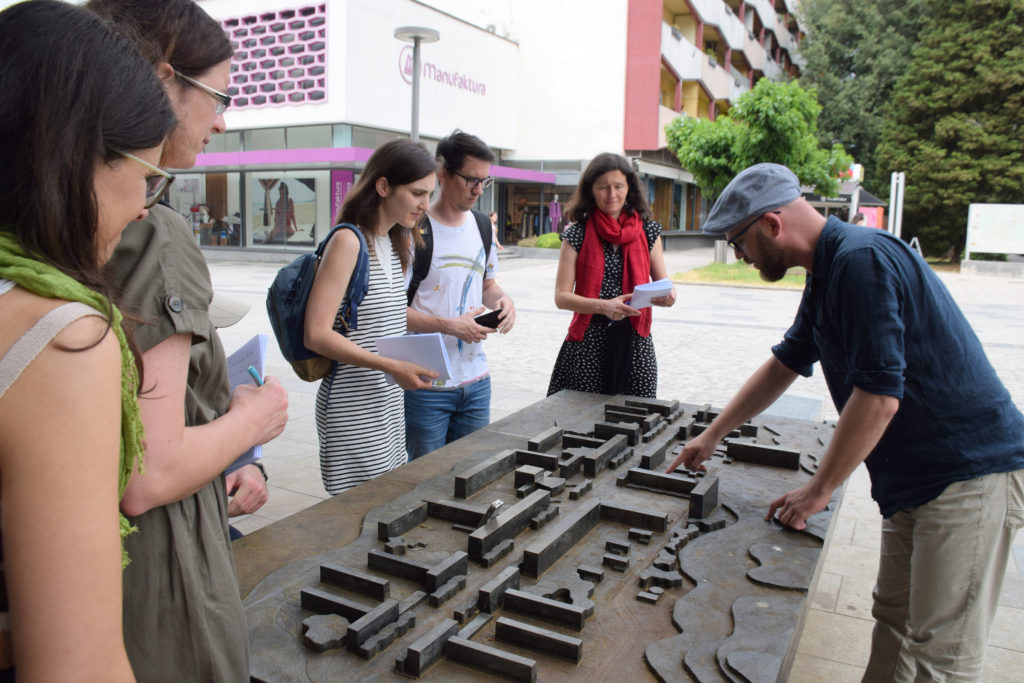
While some public buildings were realised along the street – including a municipal palace (1955), a theatre (1994), and a public library (2000), as well as a few flat blocks – the street never came to life as a meeting place. Photo by Maja Topole (2022)
We follow the path of Ravnikar’s idea and the modifications made by other city planners, we hear about the avenue of platane trees that does not yet exist, and of allergenic poplars that no longer exist. There are, however, many other unusual tree species. As our guide says, Nova Gorica is not a “park city”, as it is often called, but a “garden city”. And a city of roses, the silhouette of which, bypassing the rules of heraldry, has found a place in the city’s coat of arms.
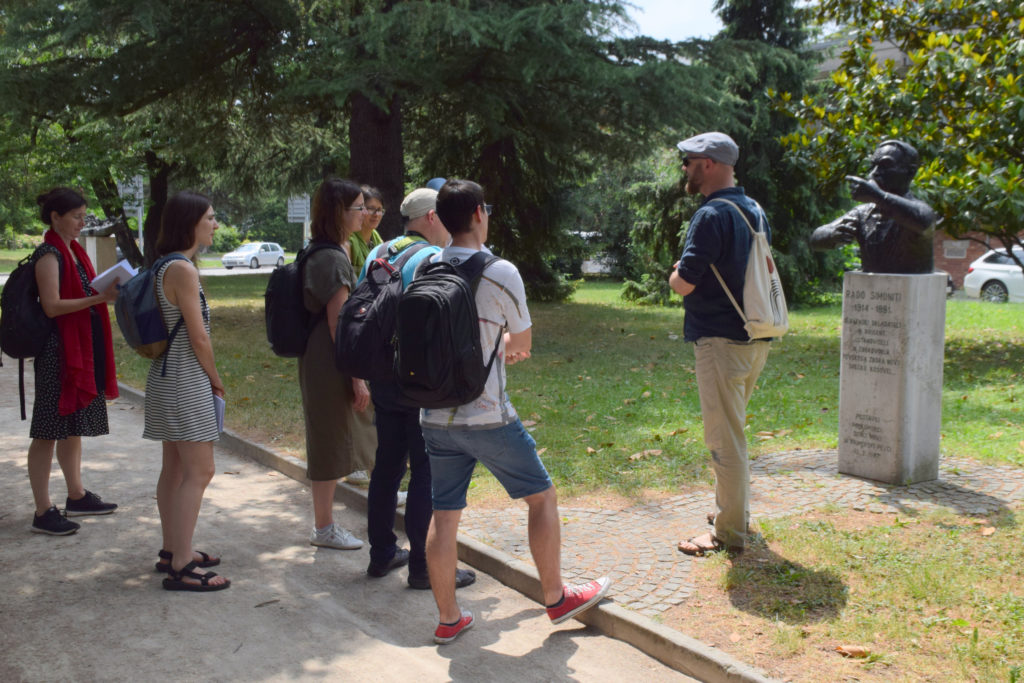
In this strictly urbanised city we come across points that contradict the initial idea: an old Friulan farm with typical “schkura” in between blocks of flats, stories of pigs that the newly-settled newcomers from the countryside were supposedly keeping in the bathrooms of bourgeois apartments of the first, so-called “Russian” blocks of flats. We hear about the eerie weight of the emptiness of the original idea of the city, which the residents and later city planners filled with outbuildings and new, smaller blocks of flats.
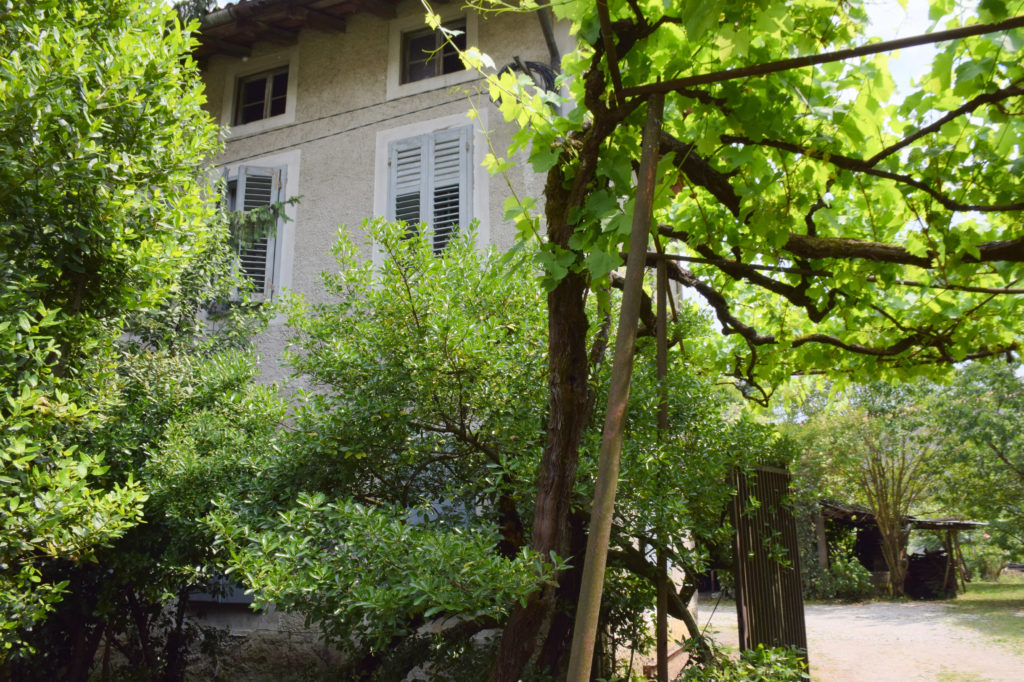
Urban legends mingle with the practicalities that were necessary to survive in a place where, except for the newly-constructed buildings that channelled sewage into the river Koren, there was little to be found. Little, apart from the common work of the brigadiers, who then returned each to their own hometowns; apart from a lot of hope, faith in the ideal of a new social reality, a glimpse of a bright future that gradually sank into the roof cracks of the megalomaniac Argonauts and took on darker contours with the collapse of industry, which was the pride of socialist Nova Gorica, and later of Perla, the pride of the capitalist transformation of the city.
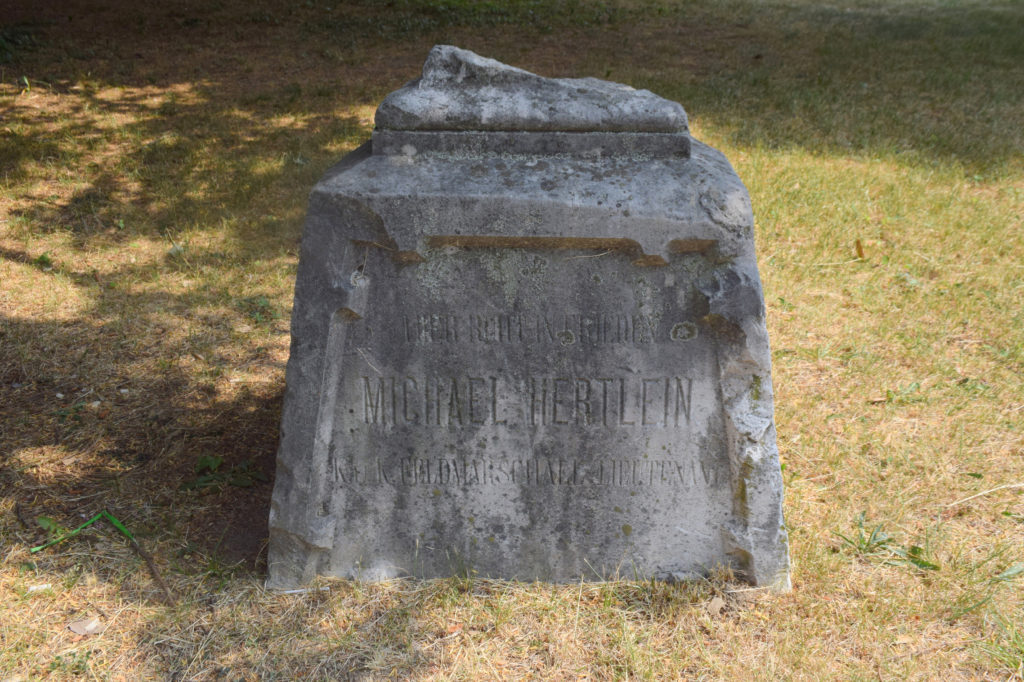
In the meadow near the bus station, gravestones, that the workers supposedly forgot to remove, testify that double oblivion is the only memory. They bear witness to the diversity of the 19th century inhabitants of Goriška and to the extent of the cemetery, abandoned after the First World War and built over with the new town after the Second World War. The cemetery, to which a road leads; a road that is still the only direct connection between Gorizia/Gorizia in Italy and Nova Gorica, and connects the two towns much more concretely than the emblematic Europe Square, which we visit next. Just like a busload of Italian tourists coming from the other side of the border. From two sides of the border, we each take photos of Franco Vecchetti’s floor mosaic and stay on “our” half of the square.
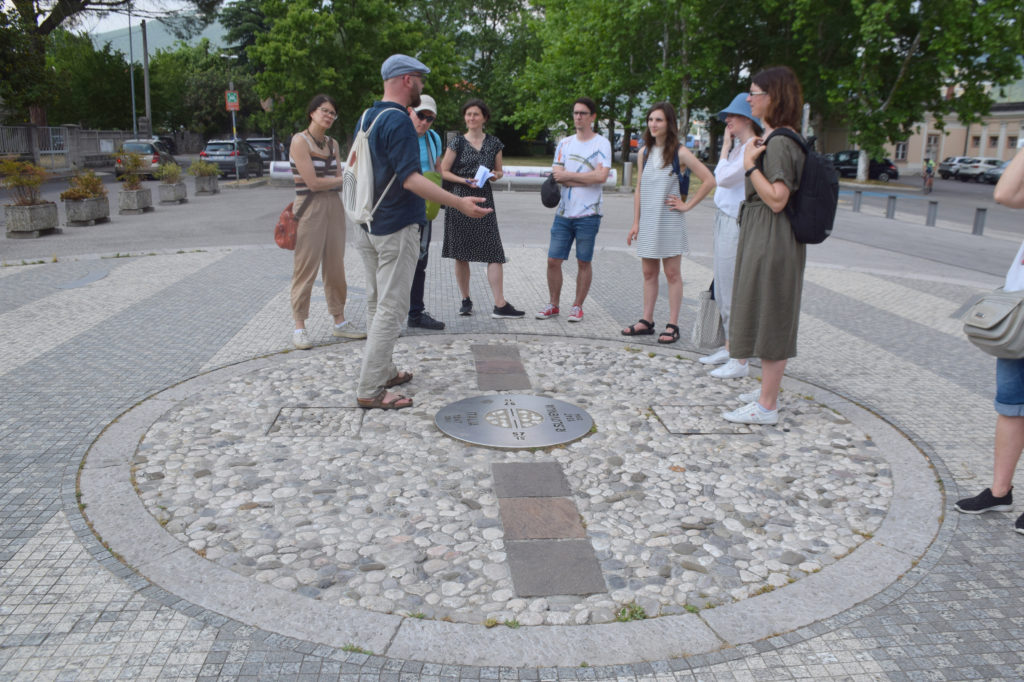
Where is the place of heritage among the meanders of the strictly outlined future, which, for practical reasons of construction of the sewer, begins to follow the unpredictable flow of the flooding Koren creek? Is there a space for heritage that is open at all, or do we all prefer to avoid it? Or can a young city, on the contrary, serve as an example of how to deal with heritage processes? Questions that lead us to visit Nova Gorica more than once.
